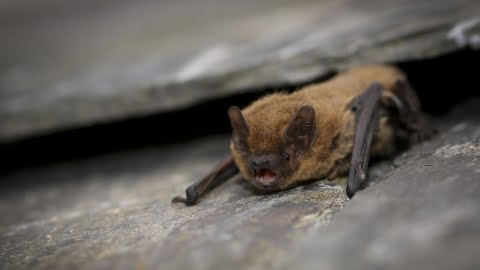Here are some really interesting facts about those nocturnal creatures that you see flitting back and forth at dusk and at night time.
There are over 1,300 species of bats worldwide and 17 of them breed in the United Kingdom.
One of these creatures are called the pipistrelle, which weighs about 4-7g (about the same weight as a 2p piece).
There are three species of pipistrelle and they are known as the common pipistrelle, the soprano pipistrelle and the rarer Nathusius’ pipistrelle. If you folded the wings of a pipistrelle, it would fit into a matchbox.
Another common species in Britain is the noctule and is one of Britain’s larger bats and weighs up to 40g (which is about the weight of a £1 coin).
The noctule emerges early in the evening and can be seen flying in a straight line high overhead, before suddenly swooping down to catch an insect. The noctule is around the same size as a starling and has long narrow wings.
The brown long eared bat is very difficult to spot and usually comes out after dark and flies close to trees and in between branches. It’s flight is slow and hovering, a bit like a butterfly.
All British bats eat insects and they eat a large amount of insects as flying uses up a lot of their energy.
For example a pipistrelle will eat up to 500 tiny insects in an hour and some species even eat spiders.
Bats are not actually blind, as we are led to believe. They can see, but at night their ears are their most important asset as they fly around and look for food using a system known as echolocation. Which is a system that uses sound waves or reflected sound to “see” things.
Bats don’t make nests, but they do hang upside down in caves or creep into crevices in trees to roost.
Some bats shelter in buildings, behind hanging tiles and boardings and in roof spaces.
During April-June the female bats gather in maternity groups, by deciding on where to give birth and look after their young safely, until the babies can fly and feed themselves.
Female bats usually give birth during the months of June and July, and tend to have just one single pup, suckling them frequently until the young start to fly at 3 weeks old.
Mating occurs during the months of September to November. Bats feed as much as they can to prepare them for hibernation.
British bats hibernate during the winter as their are not enough insects around for them to eat.
They usually hibernate in a disused tunnel or cave which is cool and humid and safe for them. They control their heartbeat and breathing and their body temperature drops so that it reserves their energy.
You might see some bats flying around during the winter time, if they need to find a new shelter or need to look for food and water to boost their energy.
For tiny mammals, bats live surprisingly long lives. If they survive their first winter, then a pipistrelle can usually live for 5-6 years with some species living up to 30 years.
A Daubenton bat is also known as a “water bat”. It’s because they use their feet or tail to fish insects from a water’s surface.
Feature image of a Common Pipistrelle by Tom Marshall

